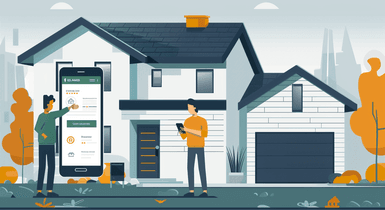FICO Score vs. Credit Score: Comparison

Banks, credit card issuers, landlords, mobile network operators, and utility providers all take your credit score into account when offering their services or products. But, for such an important financial factor, a credit score is surprisingly hard to define.
For example, is your FICO score your credit score? Well, not really. A credit score is a numerical indicator that reflects your financial discipline. The FICO score, on the other hand, is one of several types of credit assessments used to assess credit risk.
Getting a good grasp on the difference between FICO score and credit score will help you improve both ratings, opening up opportunities to obtain loans on more favorable terms.
Credit Scores: Definition and Key Features

Is FICO score the same as credit score? Let’s figure it out. A credit score is a numerical expression of your financial capabilities and creditworthiness that is mainly used by lenders to assess your reliability as a borrower. It’s taken into consideration when deciding whether you should be approved for a loan or a line of credit, and also directly impacts the terms, interest rates, and limits available to you. In other words, the higher your credit rating is, the more responsible you are in handling your loans. A lower rating, in turn, indicates that you are not trustworthy in matters of debt obligations, making lenders far more cautious when dealing with you.
The score is calculated based on:
- Bill payment history;
- Current debt;
- Number of open loans;
- Types of open loans;
- Age of credit accounts;
- Credit utilization rate;
- Whether there has been bankruptcy or debt collection, and so on.
Equifax, Experian, and TransUnion are the three nationwide bureaus that handle credit ratings. An important thing to note here is that the three use different calculation methods, which means that a person can have several ratings at once. In some cases, additional aspects of your history may be taken into account, and certain factors may be more important than others. But one way or another, the more points you get, the better it is for you. Next, let’s compare FICO vs. credit score.
FICO Score: Definition and Key Features

Although the two are used for similar purposes, they are not the same thing. A FICO numerical value is calculated by Fair Isaac Corporation (hence the acronym) using complex mathematical formulas. The company uses several versions of scoring models that are widely used for assessing creditworthiness. FICO score is a three-digit number (usually between 300 and 850) that functions pretty much the same as a credit score.
A FICO rating is based on five major factors:
- Payment history (35%);
- Credit utilization (30%);
- Credit history length (15%);
- Credit mix (10%);
- Credit inquiries (10%).
FICO score is a cornerstone indicator since it determines the terms and interest rates you can expect when receiving a loan. In practice, if you are rated “good” or “excellent,” lenders ill treat you as a low-risk client, and you can expect lower interest rates, more flexible terms, and more options.
Keep in mind that FICO has designed models to assess creditworthiness for different lending scenarios. Therefore, you may have several different FICO ratings depending on the data used in the calculation.
So, what is the difference between credit score and FICO score? How do they function?
Main Differences Between Credit Scores and FICO Scores

Is FICO the same as credit score? As we have already discovered, credit and FICO ratings are not the same thing. Let’s compare credit score vs. FICO score in more detail.
Calculation Method
Your credit score is based on the data from your credit reports, such as bill payment history, current debt, number of active loans, types of active loans, age of credit accounts, credit utilization percentages, bankruptcies, foreclosures, and so on. The rating is calculated based on this information, with different companies using different scoring models and prioritizing different factors.
FICO score is based on specific mathematical calculations and takes into account five major factors—payment history (35%), credit utilization (30%), credit history length (15%), credit mix (10%), and credit inquiries (10%). Your FICO standing is calculated by assessing these five facets of your financial life, with each one determining a certain percentage of the total score.
Although FICO and credit scores are calculated differently, they represent the same thing. Still, these two ratings are based on different scoring approaches, assess different factors, and rate their importance differently as well.
Industry Adoption
This is the key point in the FICO score vs. credit score comparison. While credit ratings are largely considered to be “educational” rather than practical, FICO ones are widely used by lenders across a variety of industries. In fact, FICO is one of the two companies whose scoring models are used by most lenders.
Range
A credit score of 720 is considered excellent, with 719–690 being good, 689–630 being fair, and anything below falling into the “untrustworthy” category.
FICO score ranges from 300 to 850. Any score above 670 is generally considered good. A score of 800+ is exceptional, 799 to 740 is very good, 739 to 670 is good, 669–580 is fair, while having 580 or less is a very bad sign for your financial health.
There are a lot of more subtle differences between the two, but these are the major factors that can help you differentiate one from another.
Final Thoughts
Is my FICO score my credit score? Well, now you hopefully know that this is not the case. The best approach here is to think of the FICO metrics as one of the ways to assess creditworthiness available to lenders. Although it may seem that credit and FICO ratings are just different names for the same thing, this is not entirely true. There are several notable differences between these models, including their calculation method, industry adoption, and score range.
However, it is fair to say that while these scoring approaches may rely on different data sources and weight factors differently, they measure the same thing and are used for the same purpose. And your task, as a borrower, is to get the highest score possible. The better your rating, the higher your chances of getting a loan approved, receiving good rates, and negotiating flexible terms.




